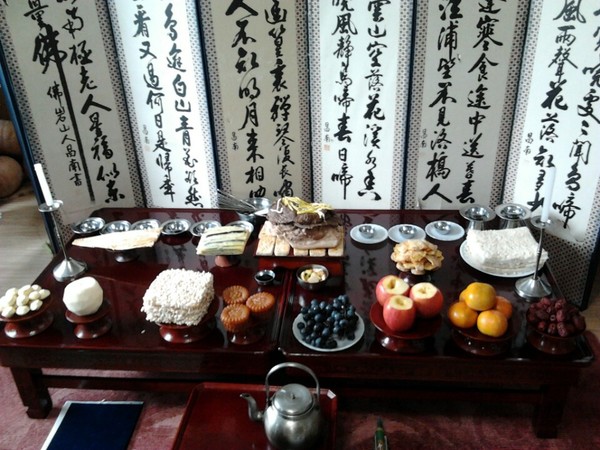
Chuseok, is one of the most important and biggest holidays that have remained in Korea. To explain easily to foreigners, it is often called a Korean version of Thanksgiving Day. During Chuseok holiday, people visit their hometowns to get together and celebrate holidays with their families, giving thanks to their ancestors and sharing some foods. Having ancestral rites during holiday may sound odd yet interesting for those who are not familiar with Korean culture.
However, this is one of the cultures of Korea and it is necessary. Chuseok was originally called Hangawi, which means the 15th day of August, according to the lunar calendar. At that day the harvest moon, a largest full moon appears. At the past, when Korea was an agrarian society, people gave thanks to their ancestors for the plentiful harvest of the year. This ritual has become a tradition and it remains until now.
There are two customs for Koreans to give thanks to their ancestors: Charye and Seongmyo.
Charye is an ancestor memorial service and this is meant to worship ancestors and repay their grace. Charye used to be held on the day of first, 15th of every month and holidays but nowadays it is usually held only on holidays. During ancestral rites, foods-to- serve is fixed. They usually serve “jugwapo (liquor, fruits, and jerky, in English)” and also a seasonal food- songpyeon which is a rice cake shaped as half-moon. After offering those foods to the family’s ancestors, family members share those foods and enjoy them together.
Seongmyo is another traditional custom of Chuseok. It is to visit the ancestral graves and pay respect toward them. Traditionally, managing a tomb and cleaning up grave by removing weeds have been regarded as important ritual serve the spirit of an ancestor. Therefore, showing respect and appreciation for family ancestors are required.
This year, Chuseok fell on September 10th. The UOS Times hopes you have spent a fun and rewarding holiday, Chuseok.

